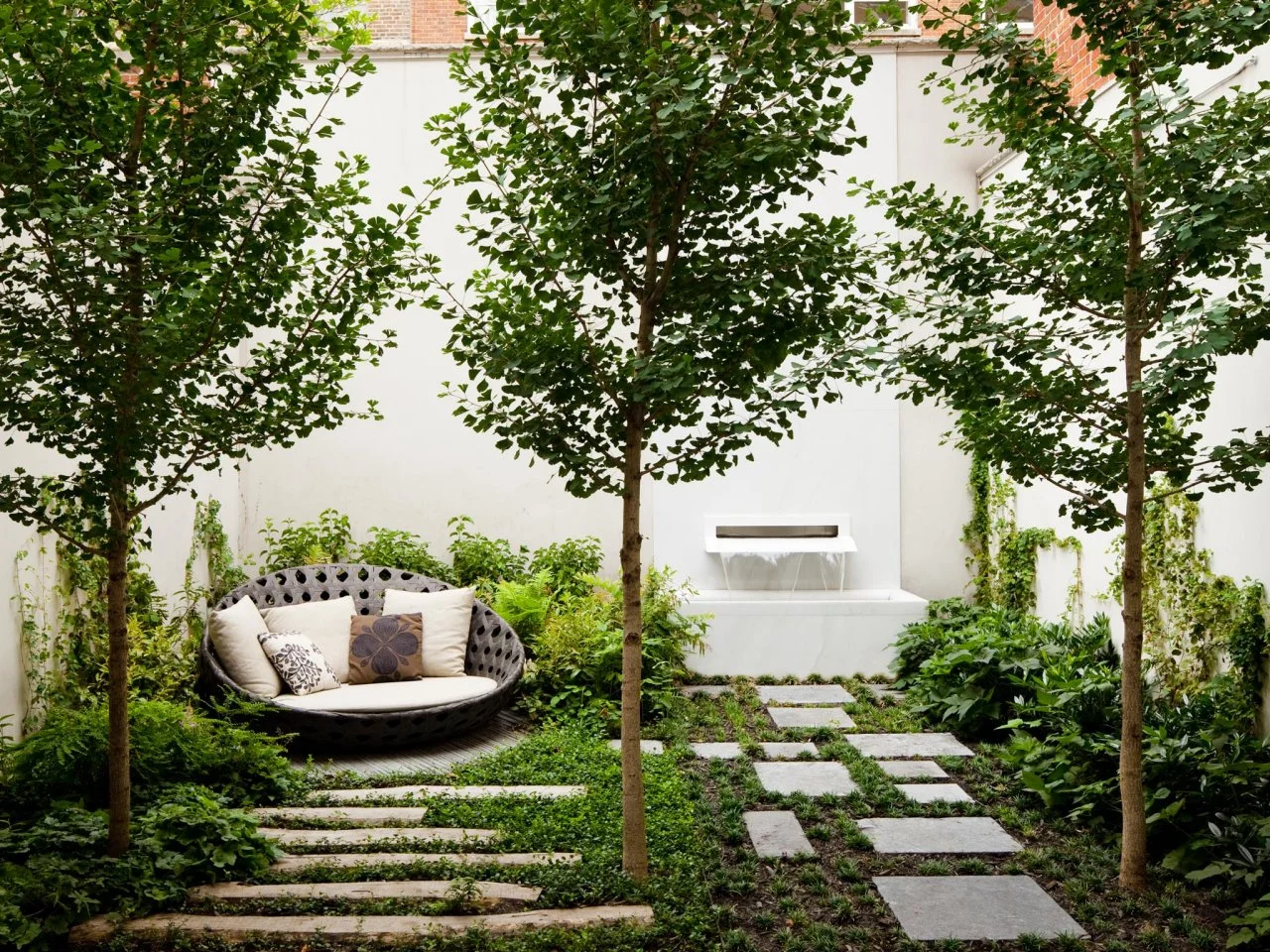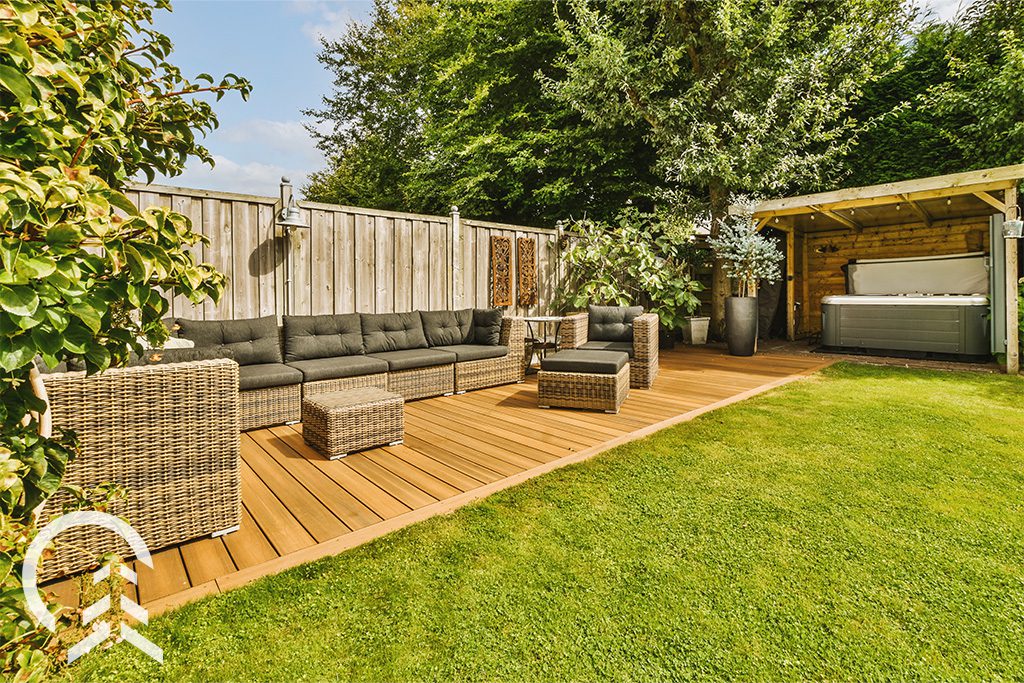Key Skills Every Great Landscape Architect Should Have
Transform Your Garden With Cutting-edge Landscape Design Concepts and Strategies
Transforming a garden calls for thoughtful consideration of its special characteristics. Reliable landscape Design can boost both capability and visual appeal. By checking out different strategies, one can develop a room that not just shows personal design yet likewise sustains neighborhood biodiversity. As the trip unravels, questions regarding plant option, format, and sustainability emerge, triggering a deeper expedition right into just how to make these ideas come to life.
Examining Your Outdoor Space: Comprehending Your Yard's Prospective
Reviewing outdoor area is necessary for efficient landscape layout. Comprehending the unique characteristics of a garden permits designers to maximize its potential. Variables such as soil high quality, sunshine direct exposure, and existing structures play a crucial function in identifying what can be accomplished. Analyzing the topography aids identify areas for growing, courses, or water features, while keeping in mind drainage patterns ensures that plants thrive without waterlogging.
Recognizing the yard's microclimates can influence plant option and placement. Observing how the space is utilized by homeowners notifies functional Design choices, such as seating areas or play areas. In addition, considering the bordering environment and neighboring landscapes can offer inspiration and context for Design choices. By completely taking a look at these elements, one can produce a natural and welcoming exterior area that shows the owner's vision while balancing with nature. Inevitably, an extensive evaluation lays the groundwork for a successful landscape Design task.
Selecting the Right Plants: An Overview to Color, Structure, and Seasonal Interest
When selecting plants for a landscape style, recognizing the interaction of color, structure, and seasonal rate of interest is essential for producing a lively and vibrant yard. Color can stimulate feelings and set the tone for the space; consequently, picking an unified combination enhances visual charm. Cozy tones like reds and oranges create power, while cooler hues like blues and greens use serenity.
Appearance adds deepness and measurement, permitting a mix of vegetation sizes and shapes. Combining fine-textured plants with bold-leaved selections produces comparison and intrigue.
Seasonal rate of interest is essential for maintaining year-round elegance. Selecting a variety of plants that bloom in different seasons assurances that the garden continues to be lively, changing from spring's vibrant flowers to fall's abundant vegetation. By attentively considering these aspects, one can curate a landscape that is not just cosmetically pleasing however interesting and likewise varied throughout the year.

Producing Practical Areas: Creating Spaces for Relaxation and Entertainment
Creating functional areas in a landscape Design enhances the use of outdoor spaces, permitting property owners to flawlessly mix relaxation and enjoyment. By thoughtfully separating locations into distinct zones, individuals can deal with different activities, from silent resorts to lively celebrations. A properly designed area might integrate a comfy analysis nook nestled amongst lush plant, providing a tranquil getaway (Landscape Architect). On the other hand, a vivid outside eating area can serve as the ideal setup for celebrations with friends and family
Tactically placed paths can guide visitors in between these areas, making certain easy navigation. Furthermore, integrating components like seating areas, fire pits, or water features can enhance the total ambiance and performance. The integration of varied appearances and shades in each zone can produce aesthetic interest while preserving a cohesive visual. Eventually, creating functional zones allows home owners to optimize their outdoor experience, transforming their yards into versatile areas that satisfy diverse way of living demands.
Integrating Hardscape Aspects: Patios, Walkways, and Focal Things
Incorporating hardscape aspects into landscape Design enhances practical areas by offering framework and visual allure. Patios work as important outside living areas, allowing house owners to enjoy meals and events in a specified area while enhancing access. The choice of materials, such as all-natural rock or concrete, can significantly influence the total aesthetic, mixing effortlessly with the surrounding atmosphere.
Sidewalks help with movement through the yard, guiding visitors while adding depth and rate of interest. These paths can be crafted from numerous materials, including crushed rock, pavers, or block, each adding to the garden's character.
Prime focus, such as ornamental rocks, sculptures, or water attributes, attract the eye and create a feeling of function within the landscape. Purposefully put, these elements can transform an ordinary yard right into a fascinating room, welcoming expedition and engagement. With thoughtful integration of hardscape, a landscape comes to be not only useful however also aesthetically sensational.
Enhancing Privacy and Protection: All-natural Obstacles and Structures
To boost personal privacy and protection in landscape style, using natural obstacles such as thick hedges can effectively shield a residential property from unwanted views. Furthermore, setting up privacy fences gives a strong framework that adds to a sense of security and seclusion. Together, these components create an even more intimate outdoor area while discouraging prospective breaches.
Growing Dense Hedges
While several homeowners look for visual allure in their landscapes, planting dense hedges serves a dual objective of boosting personal privacy and protection. These natural barriers create an aesthetic guard, efficiently obstructing the view from prying eyes and discouraging prospective burglars. Different types, such as boxwood, holly, or investigate this site privet, can be chosen for their development patterns and vegetation density, making certain rich protection throughout the year. In addition, properly maintained hedges can add to a tranquil setting, soaking up sound and supplying an environment for wildlife. The calculated placement of these hedges can define home boundaries and create private outdoor areas, enabling home owners to appreciate their yards with a sense of safety and security. Inevitably, dense hedges are a reliable solution for mixing charm with performance.
Installing Privacy Fences
Privacy fencings work as an additional efficient approach for improving privacy and security in domestic landscapes. These frameworks not just define residential or commercial property borders but also produce a feeling of privacy, shielding home owners from spying eyes. Numerous materials, such as metal, vinyl, and wood, deal distinct looks and degrees of longevity, permitting homeowners to select based upon their Design preferences and maintenance requirements.

Lasting Landscape Design: Eco-Friendly Practices for a Greener Garden
Lasting landscape design highlights the relevance of indigenous plant option and water preservation techniques. By choosing plants that are well-adapted to the neighborhood atmosphere, garden enthusiasts can lower upkeep and resource use. Implementing effective watering techniques even more improves the garden's ecological benefits, promoting a much healthier environment.
Native Plant Choice
Native plant selection plays a necessary function in sustainable landscaping, advertising biodiversity and minimizing the need for chemical inputs. By picking plants belonging to a specific region, garden enthusiasts can create habitats that sustain neighborhood wild animals, such as pollinators, birds, and useful insects. These plants are adjusted to the local environment and soil conditions, needing less water and upkeep compared to non-native types. Additionally, native plants can assist regulate erosion and boost dirt wellness, cultivating a well balanced ecosystem. Including indigenous types into landscape makes not just enhances the visual allure of the yard yet additionally adds to environmental durability. Inevitably, indigenous plant selection is a vital approach for those looking for to cultivate a lasting and dynamic yard.
Water Conservation Techniques
Integrating native plants can substantially boost water conservation efforts in landscaping. These plants are well-adapted to neighborhood environments, requiring much less water and upkeep than non-native ranges. Carrying out drip watering systems allows targeted watering, reducing evaporation and runoff. Rainwater harvesting systems can likewise be installed, saving and gathering rain for garden use. Mulching helps keep dirt moisture, minimizing the frequency of watering. Grouping plants with similar water requires with each other creates efficient watering areas, better conserving water. Furthermore, utilizing absorptive products for pathways allows rain to seep right into the ground, renewing groundwater products. By employing these water conservation techniques, gardeners can produce sustainable landscapes that grow while lessening ecological effect (Landscape Architect). Such practices contribute to a greener yard and a much healthier community
Customizing Your Layout: Including One-of-a-kind Attributes and Personal Touches
How can one transform a garden into an individual haven? Customizing a landscape Design entails integrating distinct features that show specific tastes and way of livings. One approach is to integrate customized garden art, such as sculptures or handcrafted birdhouses, which can function as focal factors and conversation beginners. Additionally, tailoring plant selections based upon individual choices or seasonal blossoms can develop a vibrant and progressing area.
Producing practical areas, such as a relaxing reading space or an exterior eating room, can enhance functionality and comfort. Incorporating elements like a fire pit or a water function can introduce an inviting setting.
Color textures, systems, and products must align with the property owner's design, whether it be contemporary, rustic, or eclectic. Ultimately, the objective is to create a space that resonates with the person's identification, making find out here the garden not just a visual delight yet look at these guys a real extension of the property owner's individuality.
Regularly Asked Concerns
How Do I Budget plan for a Landscape Design Job?
To allocate a landscape Design job, one should analyze job range, research prices for products and labor, focus on features, and allocate an additional 10-20% for unanticipated costs, making certain a realistic economic strategy.
What Devices Are Important for Home Garden Landscaping?
Essential tools for home yard landscape design include a shovel, rake, yard fork, trimming shears, trowel, wheelbarrow, and hoe. These tools aid in soil prep work, planting, maintenance, and efficient transportation of materials throughout the landscape design project.
Exactly How Can I Maintain My Yard After Revamping?
To preserve a revamped yard, regular watering, mulching, weeding, and trimming are essential (Landscaper). Surveillance plant wellness, adjusting dirt nutrients, and seasonal plant treatment add to a successful atmosphere that showcases the garden's brand-new Design properly
When Is the very best Time to Begin Landscape Design?

Can I DIY My Landscape Design or Should I Hire an Expert?
People can definitely DIY their landscape Design if they have creativity and fundamental skills; nevertheless, working with an expert typically guarantees an extra cohesive and professional result, specifically for complicated tasks or particular Design desires.
Recognizing the garden's microclimates can affect plant option and placement. When selecting plants for a landscape style, recognizing the interaction of color, structure, and seasonal passion is crucial for producing a dynamic and vibrant garden. Choosing a selection of plants that flower in various seasons assurances that the yard continues to be lively, moving from spring's dynamic blossoms to autumn's abundant vegetation. Integrating indigenous types right into landscape creates not only boosts the aesthetic charm of the yard but likewise contributes to ecological strength. Necessary devices for home garden landscape design include a shovel, rake, yard fork, trimming shears, hoe, trowel, and wheelbarrow.